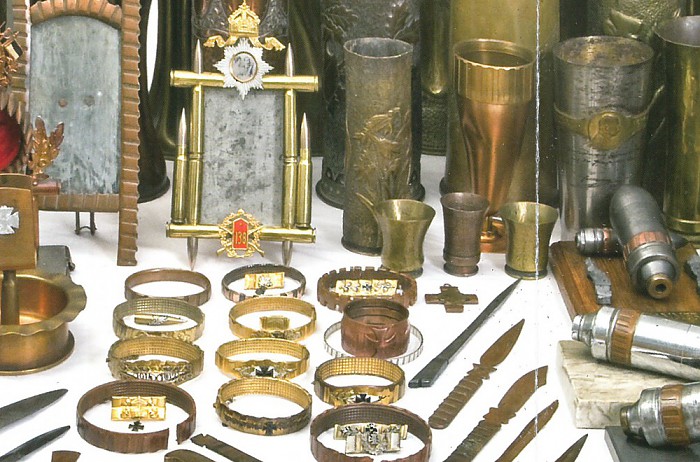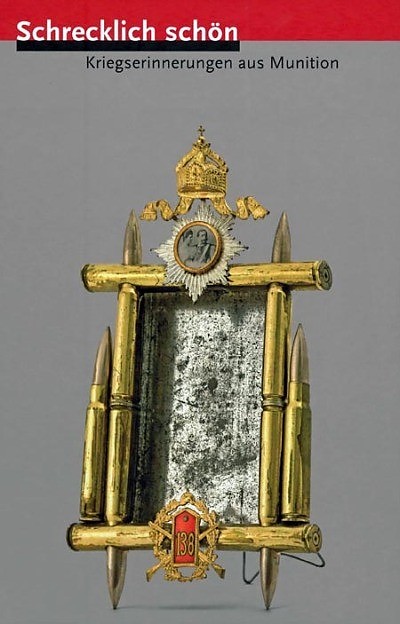

25. March 2015 – 10. May 2015
Cabinet Exhibition
War memories from ammunition
Joint Project With the Erfurt City Museum
In August 1914 a thundery political atmosphere was unleashed over Europe, which had been charged by the competition between the world powers. A wave of enthusiasm was sweeping across the continent at the beginning of the "Great War". This also applied to the Prussian administrative and garrison cities of Erfurt and Kassel, which were soon to become the largest armament centers of the German Reich. During the First World War, up to 42,000 workers were employed in 650 armament factories in Erfurt alone.
In view of the devastating effect of new weapons, the memorabilia made from ammunition parts that the soldiers produced themselves or had produced by the jewellery industry may seem strange today. Nevertheless, it is important to look at them from their time, since they fulfilled specific functions in the culture of memory. Numerous novels about the First World War, by Erich Maria Remarque, Ernst Jünger or Ernest Hemingway, speak of this phenomenon – which has nevertheless largely been forgotten today.1
Many of these garnet guide rings, cartridge cases and cartridges, further processed into bracelets, vases, letter openers or smoking utensils are contained in the Gerhard Seib Collection. This collection, unique in its scope and diversity, was acquired by the Förderverein Stadtmuseum Erfurt in 2014. 100 years after the beginning of the war, the exhibition was being shown at the Museum of Sepulchral Culture. It offered a representative overview of these "terribly beautiful" war memories made from ammunition.
The cabinet exhibition "Schrecklich schön. War Memories from Ammunition" was opened on Wednesday, 25 March 2015 at 6 p.m. together with curator Hardy Eidam from the Stadtmuseum Erfurt and Director Prof. Dr. Sörries.
1. E. M. Remarque "Im Westen nichts Neues", Cologne 1996, p. 119 for example, or E. Hemingway " In einem anderen Land", Hamburg 1958, p.61, 3. H. Barbusse "Das Feuer, Tagebuch einer Korporalschaft", Hamburg 2013, p. 51
Arbeitsgemeinschaft Friedhof und Denkmal e.V.
Zentralinstitut für Sepulkralkultur
Museum für Sepulkralkultur
Weinbergstraße 25–27
D-34117 Kassel | Germany
Tel. +49 (0)561 918 93-0
info@sepulkralmuseum.de









